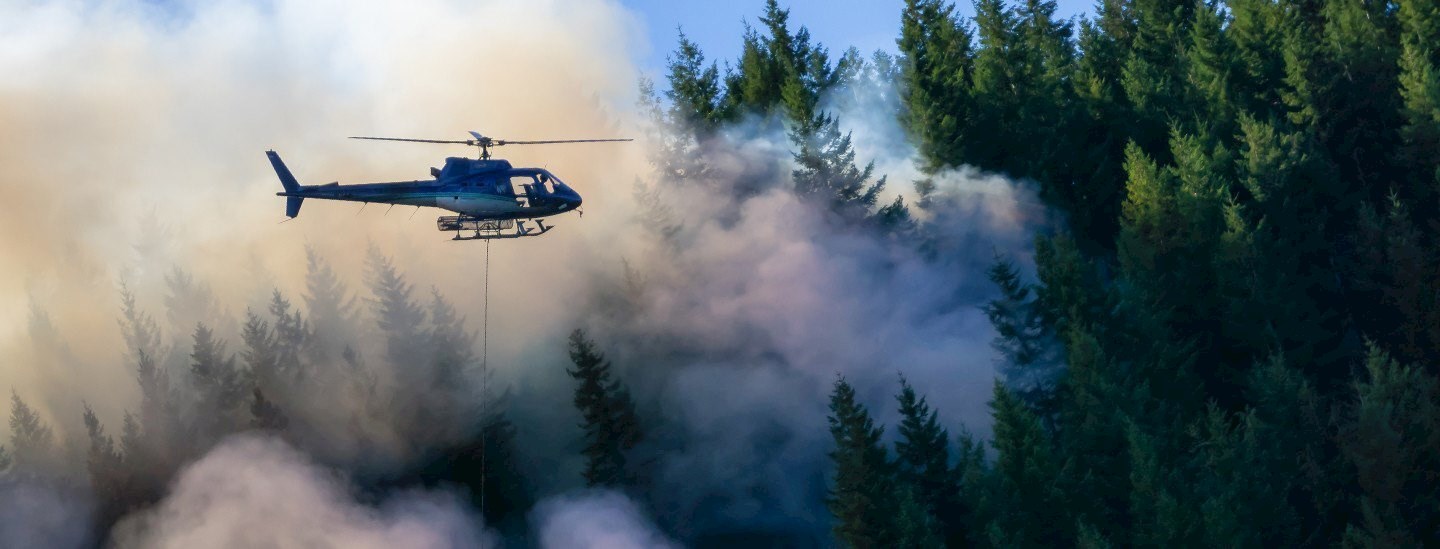Wildfires can disrupt all aspects of life, including business plans. Ensuring that you're ready for all types of business interruptions means you'll be prepared for the fire and ready to recover after the fire subsides. Having a business continuity plan that focuses on wildfire recovery will ensure a smooth transition from uncertainty to business-as-usual. Our wildfire preparedness guide offers advice on planning, preparation, evacuation and filing an insurance claim after a wildfire.
- Planning your business's safety before a wildfire
- Preparing for a wildfire
- Evacuation preparation during a wildfire
- Post-wildfire recovery guidelines for your business
- Filing a commercial insurance claim for wildfire damage
Planning your business's safety before a wildfire
Planning and preparing can make a big difference in staying safe during a wildfire and rebounding afterwards. Recovering quickly from a wildfire requires planning, understanding what to do in the event of a wildfire and knowing how to report any losses.
In anticipation of a wildfire, start talking to your Gallagher representative as early as possible to be sure you secure appropriate insurance coverage, update current location schedules and understand what your current property policy covers.
Preparing for a wildfire
Awareness and preparation are key to minimizing risk during a wildfire. By understanding your vulnerabilities and properly planning, you can reduce the effect on your organization and employees. The best protection is to have a solid wildfire disaster plan in place.
- Meet with your emergency response team to make sure team members understand the plan and their roles.
- Review, revise and distribute your internal communication plan so employees know what to do and where to go for information during a wildfire.
- Store photos and/or videos that document your assets and equipment offsite or online.
- Verify that all the contacts on the Emergency Resource List are current.
- Update your Crisis Communications Planning Checklist.
- Review steps for communicating with employees in the Social Media and Disaster Communication Checklist.
- Make sure your business is equipped with items on the Disaster Supply List.
- Review the Wildfire Preparedness Checklist.
Evacuation preparation during a wildfire
- Gather essential items in case you must evacuate. Refer to the Evacuation Checklist or items to bring.
- Heed evacuation warnings. It may seem like you have time, but conditions can change in an instant, making evacuation more difficult. In addition, leaving when local officials order an evacuation clears the roads so firefighters can get the necessary equipment in place to fight the fire.
- When evacuating, prepare yourself, employees and tenants for exposure to heat and embers. If possible, wear long pants made from 100% cotton, a long-sleeved shirt, heavy boots or shoes, a dry bandana to cover your face, and goggles or glasses to protect your eyes.
- Shut off the gas, if possible, to prevent an ignition source.
Make sure your phone can receive emergency alerts
The National Public Alerting System sends geo-targeted emergency alerts. To make sure your mobile phone can receive them, test your phone's compatibility at Alert Ready.
Post-wildfire recovery guidelines for your business
After receiving the all-clear signal from your local agencies or emergency personnel, you can begin your post-wildfire procedures. Review the Natural Catastrophes: Preparing for Business Interruption and Extra Expense Claims list for assessing business interruption impacts, as well as potential claims coverage. It's important that your claims advocate receive this information as soon as possible.

